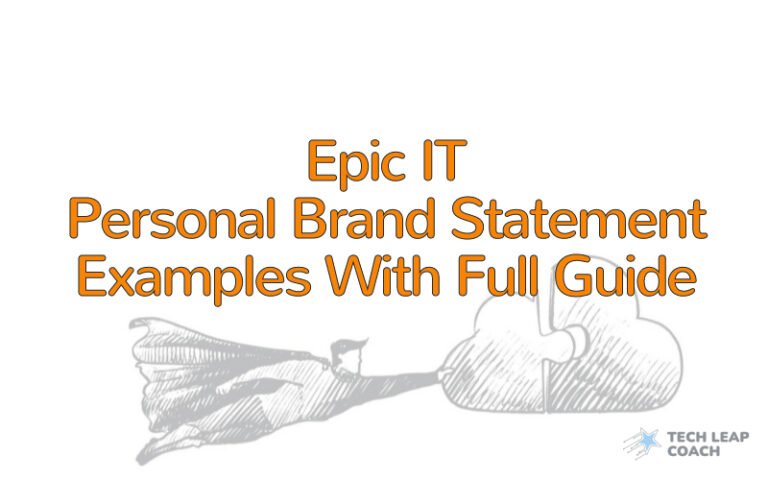Building Your Personal Brand: Strategies for Professional Success
Nowadays your online presence can be as significant as your real-world impact.
So it’s more important than ever to create a personal brand that showcases your unique skills and personality.
But where do you start?
What are the steps to making your personal brand resonate with your intended audience?
This no-nonsense guide cuts straight to the chase, offering you the know-how to develop a personal brand that aligns with your professional ambitions and attracts the opportunities you deserve.
TL;DR:
Personal branding is built on promoting a person’s unique mix of skills, experience, and personality, and requires a focused, intentional approach centered around credibility, consistency, visibility, and authenticity.
A strong personal branding strategy involves identifying your target audience, curating your online presence to align with your brand, and engaging in networking and community participation to enhance visibility and authority.
The evolution of your personal brand is essential and should reflect professional growth, requiring regular impact assessment and an adaptable approach to rebranding and pivots as your career and interests develop.
Crafting Your Identity: The Essence of Personal Branding

Diving into personal branding, we find it to be:
The process of promoting oneself through a unique combination of skills, experience, and personality
Not about boasting or showboating; it’s about showcasing genuine individuality, emphasizing distinctive experiences, and establishing authority within your industry
The essence of personal branding lies in a conscious, intentional effort, precise focus, and thoughtful positioning rather than trying to appeal to everyone.
Building a personal brand begins with introspection, understanding the reputation you want to build, and how to engage with your target audience.
Such a well-crafted personal brand can help you stand out in your field, command higher salaries, and shape a trustworthy reputation. Moreover, personal branding significantly influences career development and success. So, how do we go about building a strong personal brand?
Let’s explore the key pillars that support personal branding.
The Pillars of a Strong Personal Brand

A strong personal brand stands on four pillars, which together contribute to an effective personal brand and ultimately, a successful brand:
Credibility
Consistency
Visibility
Authenticity
These pillars serve as the bedrock for a memorable and trustworthy reputation.
They work together, ensuring that your personal brand resonates with your audience, reflects your true self, and remains consistent across different platforms.
Let’s delve deeper into these pillars.
Establish Your Unique Value Proposition
The first pillar, your unique value proposition, serves as the cornerstone of your personal brand.
It’s about showcasing your unique qualities and personal narratives, elements that are exclusive to you. This is where you differentiate your personal brand from others. Your unique value proposition tells your audience why they should choose you over others.
It’s your secret sauce, your magic ingredient, that sets you apart in a crowded marketplace.
To establish a unique value proposition, start by identifying what you bring to the table.
What makes you different? It could be a particular skill set, a distinct approach, or a unique perspective. Whatever it is, make sure it adds value to your audience and sets you apart from your competitors.
Remember, your unique value proposition is what makes your personal brand stand out, so take the time to define and refine it.
Consistency Across Channels
The second pillar of a strong personal brand is consistency.
Maintaining a consistent message, tone, visual identity, and style across different platforms is key in building trust and ensuring your audience recognizes and remembers your personal brand. A consistent personal brand leaves a lasting impression on your audience, making you easily recognizable in a sea of competitors.
If you want to stand out and evolve naturally with your brand, you need to retain a strong, consistent personality. This also extends to your public life and real-world interactions.
Remember, your audience should experience the same brand whether they’re interacting with you online or offline.
Be it your website, social media profiles, or even personal interactions, your brand should always shine through consistently, as this will influence public perception.
Authenticity: Being True to Yourself
The third pillar of a strong personal brand is authenticity.
It’s about being true to yourself, expressing your genuine voice, and sharing personal anecdotes that resonate with your audience. Authenticity in personal branding is not about crafting a persona or playing a role. It’s about allowing your true self to shine through, even if that means showing vulnerability or admitting mistakes.
Authenticity is reinforced when your values are shown consistently in both actions and communications, solidifying your reputation.
Displaying your human side, sharing personal experiences, and being transparent about your journey not only makes you relatable but also helps establish a deep, meaningful connection with your audience.
So, always remember, in the world of personal branding, authenticity is king.
Developing a Personal Branding Strategy

As you understood the essence and pillars of personal branding, now it’s time to delve into the heart of the matter – developing a personal branding strategy.
A comprehensive strategy includes:
Identifying your purpose
Assessing your current brand
Formulating your personal story
Expressing your brand during personal interactions
Utilizing various communication channels
Involving influencers in your branding
Periodically reviewing your brand
Let’s break down these steps further in the following subsections.
Identify Your Target Audience
Identifying your target audience is an important step in developing your personal branding strategy.
It involves understanding the needs, preferences, challenges, and aspirations of your audience. Remember, not everyone will be interested in what you have to offer. However, there will be a group of people, your target audience, who will find value in your offerings.
Your job is to find them and tailor your messaging and content to resonate with them.
Understanding your audience’s expectations plays a significant role in how you want to be perceived.
It’s about finding the intersection between your expertise and the audience’s needs. Once you’ve identified your target audience, you can tailor your content, messaging, and branding efforts to resonate with them.
Remember, your personal brand should be a reflection of both who you are and what your audience wants.
Curate Your Online Presence
Your online presence plays a significant role in shaping your personal brand.
It’s essential to curate and clean up existing social media accounts to maintain a professional and cohesive presence that aligns with your personal brand. This includes a complete LinkedIn profile and a personal website, as these platforms are often used for research by those looking to hire or work with you.
Maintaining an active presence on platforms like Instagram by consistently posting content shows dedication and enhances your social media acumen.
Also, integrating carefully researched keywords into your online spaces ensures that you are easily discoverable by your target audience.
So, always remember, your online presence is the digital representation of your personal brand. Make sure it’s consistent, professional, and reflective of your brand values.
Network and Community Engagement
Networking and community engagement are powerful tools to enhance your personal branding. Here are some ways you can do this:
Attending industry events
Participating in public speaking
Hosting workshops or training sessions
Joining and being active in professional associations related to your industry
These activities can significantly increase your visibility and position you as an authority in your field. They can also support your professional development and enhance your branding efforts.
Involvement in community projects or volunteering for causes helps demonstrate your social responsibility and commitment, adding a positive dimension to your personal brand. Participation in collaborative projects with local professionals or businesses can showcase your teamwork skills and expand your professional network.
So, don’t underestimate the power of networking and community engagement in strengthening your personal brand.
Leverage Social Media for Your Brand

Social media has become central to personal branding, offering platforms to showcase your expertise, engage with followers, and build a leadership persona that resonates with your target audience.
Social media influencers can serve as an example of how to leverage these platforms effectively. From choosing the right platforms to creating engaging content and interacting with your followers, each aspect plays a crucial role in leveraging social media for your personal brand.
Let’s explore these aspects in more detail.
Selecting the Right Platforms
You need to pay special attention to select the right social media platforms if you want to build a strong personal brand.
Doing this involves defining clear goals and understanding your target audience. Remember, your target audience might not be present on every platform. So what to do? That’s right, you select platforms where your target audience is already engaged and active.
On top of that, the choice of platform should be informed by where you can best showcase your personal brand and how well the platform caters to your niche.
So, whether it’s LinkedIn for professional networking or Instagram for visual storytelling, choose the platforms that align with your brand’s message and your audience’s preferences.
Content Creation and Curation
These are two key ingredients to personal branding on social media.
Developing a strategic content plan that aligns with your personal brand goals ensures that your content resonates with your intended audience. From blog posts and YouTube videos to Instagram Stories and LinkedIn articles, your content should reflect your brand values and showcase your expertise.
Using visual storytelling and tools such as Canva can help maintain an aesthetically consistent and professional image on social media.
Also, testing different types of content and engagement strategies can help refine your approach and identify content that resonates with your target audience.
So, remember, content is king – make sure it’s strategic, engaging, and reflective of your personal brand.
Engaging with Your Followers
I’m sure you know at least some big social media accounts that are—in theory—a personal brand, but they almost never answer to their followers and commenters.
It’s lame, I know. Don’t be like that.
Engaging with your followers is an integral part of personal branding on social media. It’s about building strong relationships with your audience by actively following and interacting with other profiles, responding to comments, and participating in discussions on various social accounts.
Remember, your followers are not just numbers; they’re real people who have chosen to connect with your brand.
Therefore, make an effort to engage with them, appreciate their support, and value their feedback. This not only strengthens your relationship with your audience but also enhances your personal brand.
So, take the time to engage with your followers, and watch your personal brand flourish.
Personal Branding Examples to Inspire You

Learning from successful personal brands can provide valuable insights and inspiration for your personal branding journey, especially if you’re a business owner.
For instance, Tim Ferriss has successfully demonstrated his entrepreneurial skills and knowledge in self-optimization across various industries.
Aaron Ward, on the other hand, effectively showcases his expertise in helping creators develop and market their digital products through his blog and YouTube channel.
Similarly, Charli Marie’s evolving personal brand journey from a Tumblr fan page to a remote worker for ConvertKit, with an engaging YouTube channel, is an excellent example of adapting and growing your personal brand over time.
Brian Dean has built a credible reputation as an SEO expert by providing reliable content while avoiding dubious claims.
In another article I also collected several excellent personal brand examples (with their statements) from the IT industry specifically.
These examples serve as a testament to the power of personal branding, inspiring you to start your personal branding journey.
Integrating Offline Efforts with Your Online Brand
Sure, online presence plays a critical role in personal branding…
But integrating offline efforts with your online brand is equally important in the real life, offline world. Creating a well-crafted visual identity that includes consistent use of logos, color schemes, and typography ensures personal branding consistency across both online and offline platforms.
Offline branding materials such as professional business cards that reflect online branding elements and contributions to print publications can reach wider audiences and add credibility to your personal brand.
Remember, your personal branding efforts should not be confined to the digital realm.
Integrating offline efforts with their online counterparts can contribute to a unified theme, thereby strengthening your personal brand and enhancing professional success.
Measure the Impact of Your Personal Brand
Once you’ve established your personal brand, it’s important to measure its impact. This involves:
Auditing your personal brand to understand its current equity, including cataloging credentials
Performing self-assessment
Determining how others perceive you online
Monitoring trends on social platforms
Listening to audience feedback
These are all important to remain effective and relevant, and they require a conscious and intentional effort.
Employ market research which provides accurate data about your potential audience. This is essential for effectively tailoring your personal branding strategies. Remember, measuring the impact of your personal brand is not a one-time activity.
It’s a continuous process that helps refine and optimize your personal branding strategy over time.
Rebranding and Pivots

Your personal brand needs to evolve as you grow and change.
It’s important to continually refine and adapt it as you progress. Changes such as a loss of interest in your current field, recognizing a new opportunity, or facing an industry crisis may prompt a rebranding or pivot in your personal brand. Adapting your personal brand while maintaining core values requires versatility and a willingness to incorporate fresh perspectives and experiences.
For instance, Tony Robbins has refined his brand over the years, focusing on the contemporary relevance of financial education to align with evolving audience interests.
Planning a significant shift in your personal brand’s direction requires understanding the motives behind the change and carefully planning communication adjustments to introduce a new angle on your value proposition to the audience.
Remember, a personal brand is not static; it evolves with you.
Summary
We’ve journeyed through the world of personal branding, exploring its essence, pillars, strategies, and inspiring examples.
We’ve unraveled the importance of crafting your identity, establishing a unique value proposition, ensuring consistency across channels, and being authentic.
We’ve also delved into developing a comprehensive personal branding strategy, leveraging social media, integrating offline efforts with your online brand, measuring the impact of your personal brand, and navigating rebranding and pivots.
As you see, personal branding is more than just a buzzword; it’s a powerful tool that can catapult your professional success. It’s about showcasing your unique blend of skills, experience, and personality, connecting with your audience, and making a lasting impression.
So, are you ready to cultivate your personal brand and carve out your niche in this interconnected world?







